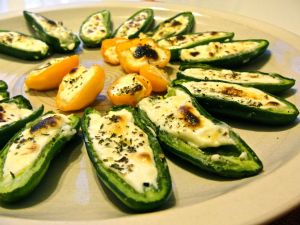I like Indian and Pakistani vegetarian dishes and have been preparing more of them lately so that I can share them with vegetarian (and gluten-free) friends; I’d not made biryani before, so here’s my first go at it.
This is like my Vegetable Pulao recipe, but with slightly different spices and vegetables.
I made a large amount, perhaps 8 servings.
Ingredients for the rice:
- basmati rice (2 cups, rinsed and soaked for about 30 minutes, and drained)
- ghee (~2 T., alternatively substitute canola oil)
- turmeric (~1 T.)
- bay leaves (a few)
- coriander seed (~1 t.)
- cumin seed (~1 t.)
- cardamom (~6 pods)
- cinnamon (1 stick, broken in half)
- water (4 cups; I mistakenly used 8, having not carefully read the recipe below that par-boiled the rice in 10 cups, then drained and discarded the water, so I needed to bake the biryani to remove excess moisture)
Preparation: In a large pot, melt the ghee, add the spices, cook for a couple mins over medium heat; add the rice to brown slightly, and then add the water, stir and cook rice as usual, covered over low heat.
Ingredients for the vegetable and masala:
- canola oil (~2 T.)
- sweet onion (1/2 medum, sliced thinly lengthwise)
- fresh green beans (1/2-2/3 pound, ends trimmed and cut to 1 inch lengths)
- carrot (2 large, diced)
- whole cashews (~1/2 cup)
- slivered almonds (~1/3 cup)
- coriander seed (~1 T.)
- cumin seed (~1.5 t.)
- garlic paste (~1 T.)
- fresh ginger (~2 thumbs, finely minced)
- fresh habanero pepper (1 pepper, seeded, deveined, and finely minced)
- water (1/2 cup)
- fresh roma tomatoes (4, puréed with the aforementioned 1/2 cup water)
Preparation: While the rice is cooking, prepare the following in oil (in an oven-safe pan if possible) over medium heat, in this order, progressively: carrot, onion, nuts, spices, garlic, ginger, habanero, green beans, stirring regularly. When those vegetables are mostly tender, add tomato/water purée and reduce until carrot is tender.
When rice is done, stir tenderly into the vegetable mixture, e.g., with a bowl scraper.
Once I did this, the dish was still too moist, so I baked it at 350° F for 20-30 mins to reduce moisture and create a slightly dry consistency on the exterior.
Ingredients for the raita:
- greek yogurt (16 oz.)
- garam masala (~1 1/2 t.)
- cucumber (1, peeled and cut to small pieces)
- tomato (~1/3 cup finley diced)
- carrot (1 small, julienned)
- water (~1/2 cup, to desired consistency)
- salt (to taste)
Preparation: before or during the preparation of rice and vegetables, mix thoroughly and let sit.
Serve the biryani with the raita on the side.
My desi housemate visiting from Bangalore approved of it; that’s a pretty good measure.
I asked him not to say anything if he didn’t care for it. :)
This was my first attempt, so if you have suggestions, please let me know.
The baking may be unnecessary if the water amount was corrected (e.g.., 2 cups water per cup of basmati rice), but I like the slightly crispy texture and browning it adds to the biryani.
Also, the habanero spiciness was nearly undetectable; if you like spicy foods, I’d use 2 or 3 habaneros for this amount of rice.
Here are the recipes I consulted for ideas:
- Jhatpat Vegetable Biryani
- Vegetable Biryani
- The Best Biryani (non vegetarian)




















